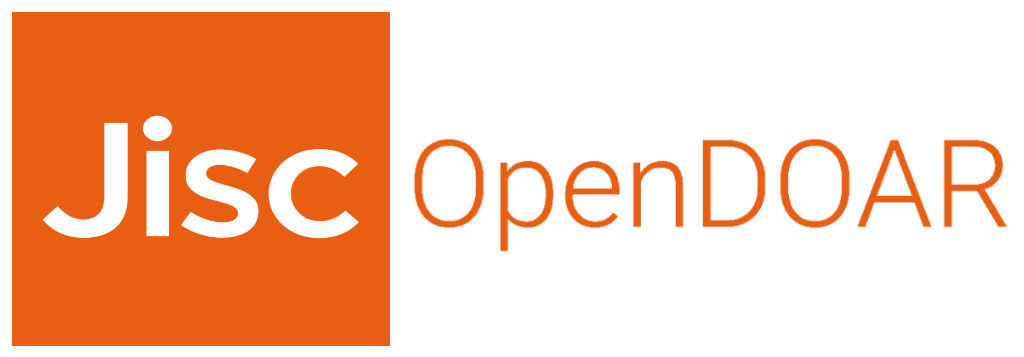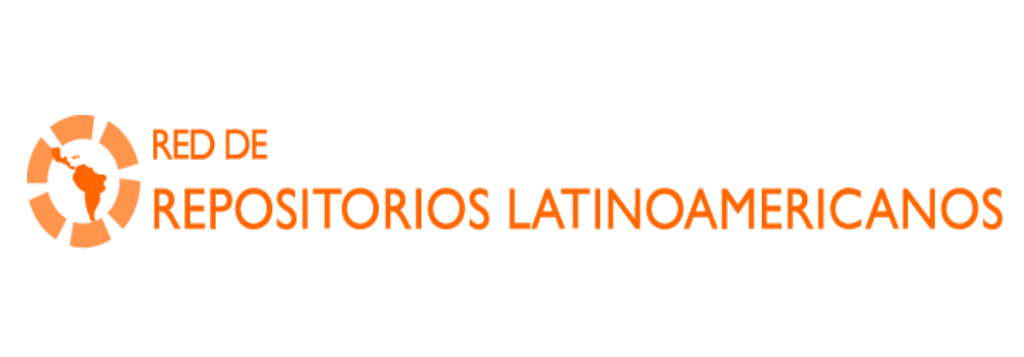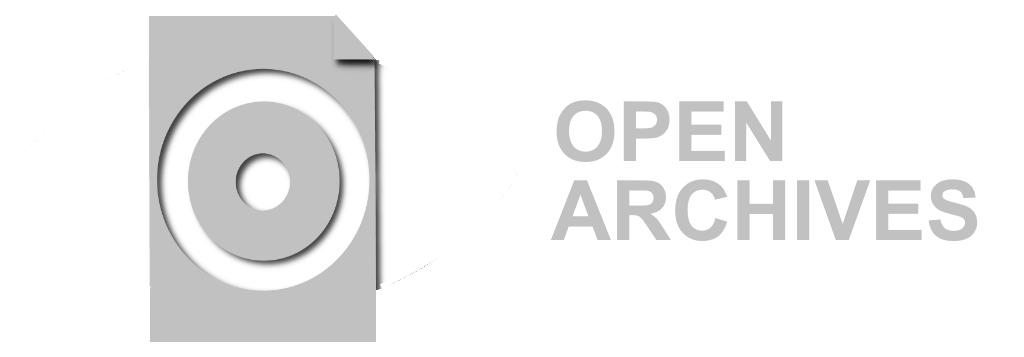Mostrar el registro sencillo del ítem
Producción de biomasa de la microalga Haematococcus pluvialis utilizando los medios de cultivo ohm y kobayashi en el biorreactor tecferm de 5 litros
| dc.contributor.advisor | Camacho Kurmen, Judith Elena | |
| dc.contributor.author | Hernández Cortes, Ángela María | |
| dc.date.accessioned | 2021-11-23T18:05:20Z | |
| dc.date.available | 2021-11-23T18:05:20Z | |
| dc.date.issued | 2019 | |
| dc.identifier.uri | https://repositorio.universidadmayor.edu.co/handle/unicolmayor/3712 | |
| dc.description.abstract | H.pluvialis es una microalga ampliamente reconocida por ser una fuente natural de astaxantina con amplio uso en la industria, sin embargo cuenta con un ciclo complejo de crecimiento. Es por esto que se propone determinar cuáles son las condiciones optimas de cultivo para obtener una producción adecuada en cantidad y calidad de biomasa de la microalga utilizando el biorreactor a escala de laboratorio Tecferm de 5 litros. El cultivo fue llevado a cabo en los medios OHM y Kobayashi (KM) bajo las condiciones de fotoperiodo 18:6 Luz/oscuridad, luz blanca por medio de lámparas fluorescentes (Phillips master TL5 HO de 54W/827), 65 Lux, pH 6.8, agitación 100 rpm, aire filtrado y temperatura 22°C ± 2 durante 21 días. Se realizó la determinación de biomasa, morfología, contenido de clorofila, astaxantina, fosfatos y nitratos. Se realizó un análisis de costos y se efectuó un análisis estadístico Kruskal-Wallis (P < 0.05) El mayor crecimiento de la microalga se presentó en el medio OHM con 1.23x106 cel/ml y el contenido de clorofila fue 11.87mg/ml observándose diferencias significativas en los parámetros analizados como pH y nitratos. El consumo de nitratos en el medio OHM fue 75%. Se encontraron diferencias significativas entre tratamientos (P= 0.0436 KW=14.46). El consumo de fosfatos en el medio OHM fue 80%, el medio KM no contenía este nutriente, por lo cual es el más económico para la producción de la microalga. El cultivo en el biorreactor Tecferm 5L utilizando el medio OHM y KM bajo las condiciones trabajadas permitió obtener una biomasa adecuada de H. Pluvialis en calidad y cantidad. | spa |
| dc.description.tableofcontents | CONTENIDO 6 FIGURAS 7 TABLAS 8 GRAFICAS 9 RESUMEN 10 INTRODUCCIÓN 11 OBJETIVOS 12 1 ANTECEDENTES 13 2 MARCO REFERENCIAL 24 2.1 Microalgas 24 2.2 Haematococcus pluvialis 24 2.2.1 Ciclo celular de H. pluvialis 25 2.2.2 Morfología y fisiología 26 2.2.3 Composición Bioquímica de la microalga H. pluvialis 27 2.2.4 Aplicaciones de la microalga H. pluvialis 31 2.2.5 Condiciones para el cultivo de la microalga H. pluvialis 32 2.2.6 Medios de cultivo 33 2.2.7 Sistemas de Cultivo 36 2.2.8 Fotobiorreactores 37 2.2.9Biorreactor Tecferm 5L 38 2.2.10 Modelos de crecimiento 39 3 DISEÑO METODOLÓGICO 44 3.1 TIPO DE ESTUDIO 44 3.2 HIPÓTESIS, VARIABLES E INDICADORES 44 3.3 TÉCNICAS Y PROCEDIMIENTOS 44 4 RESULTADOS 45 5 DISCUSIÓN 62 6 CONCLUSIONES 67 7 RECOMENDACIONES 69 8 REFERENCIAS BIBLIOGRAFICAS 70 | spa |
| dc.format.extent | 94p. | spa |
| dc.format.mimetype | application/pdf | spa |
| dc.language.iso | spa | spa |
| dc.publisher | Universidad Colegio Mayor de Cundinamarca | spa |
| dc.rights | Derechos Reservados - Universidad Colegio Mayor de Cundinamarca, 2019 | spa |
| dc.rights.uri | https://creativecommons.org/licenses/by-nc-sa/4.0/ | spa |
| dc.title | Producción de biomasa de la microalga Haematococcus pluvialis utilizando los medios de cultivo ohm y kobayashi en el biorreactor tecferm de 5 litros | spa |
| dc.type | Trabajo de grado - Pregrado | spa |
| dc.description.degreelevel | Pregrado | spa |
| dc.description.degreename | Bacteriólogo(a) y Laboratorista Clínico | spa |
| dc.identifier.barcode | 60088 | |
| dc.publisher.faculty | Facultad de Ciencias de la Salud | spa |
| dc.publisher.place | Bogotá DC | spa |
| dc.publisher.program | Bacteriología y Laboratorio Clínico | spa |
| dc.relation.references | P. Spolaore, C. Joannis-Cassan, E. Duran, A. Isambert. Commercial applications of microalgae. Journal of Bioscience and Bioengineering. 2006;101(1):87–96. | spa |
| dc.relation.references | A. Hernández-Pérez, J. I. Labbé. Microalgas, cultivo y beneficios. Revista de Biología Marina y Oceanografía. 2014; 49:157–173 | spa |
| dc.relation.references | Lorenz T. A technical review of Haematococcus Algae. Cyanotech Corporation. 1999. | spa |
| dc.relation.references | Fábregas J, Otero A, Maseda A, Domínguez A. Two-stage cultures for the production of astaxanthin from Haematococcus pluvialis. J Biotechnol. 2001; 89(1):65–71. | spa |
| dc.relation.references | Cifuentes A, Gonzales M, Vargas S, Hoeneisen M. Optimization of biomass, total carotenoids and astaxanthin production in Haematococcus pluvialis Flotow strain Steptoe (Nevada, USA) under laboratory conditions. Biol Res 2011; 36: pp. 343-357. | spa |
| dc.relation.references | Lopez Garcia M C, Del Rio E, Casas J, Fernández F, Fernández J, Rivas J, et al. Comparative analysis of the outdoor culture of Haematococcus pluvialis in tubular and bubble column photobioreactors 2006; 123(3):329- 342. | spa |
| dc.relation.references | García-Malea, M. C., Acién, F. G., Fernández, J. M., Cerón, M. C., & Molina, E. Continuous production of green cells of Haematococcus pluvialis: Modeling of the irradiance effect. Enzyme and Microbial Technology, 2006 38(7), 981–989. | spa |
| dc.relation.references | Grewe C, Griehl C. Time-and media-dependent secondary carotenoid accumulation in Haematococcus pluvialis. Biotechnology Journal [Internet] 2008;3 :1232-44. | spa |
| dc.relation.references | Ranjbar R, Inoue R, Shiraishi H, Katsuda T. High efficiency production of astaxantin by autotrophic cultivation of Haematococcus pluvialis in a bubble column photobioreactor. Biochemical Engineering Journal. 2006; 39:575-580. | spa |
| dc.relation.references | Bao Yu Z, Ya Hong G, Zhong K, Hong Jun H, Ye Guang Li. Production of astaxanthin from Haematococcus in open pond by two-stage growth one- step process. Aquaculture. 2009; 295: 275–281 | spa |
| dc.relation.references | Tocquin P, Fratamico A, Franck F Screening for a low- cost Haematococcus pluvialis medium reveals an unexpected impact of a low N/P ratio on vegetative growth. J Appl Phycol. 2012; 24:365–373. | spa |
| dc.relation.references | Li, J., Zhu, D., Niu, J., Shen, S., & Wang, G. An economic assessment of astaxanthin production by large scale cultivation of Haematococcus pluvialis . Biotechnology Advances. 2011; 29(6), 568–574. | spa |
| dc.relation.references | Yoo JJ, Choi SP, Kim BW, Sim SJ. Optimal design of scalable photo- bioreactor for phototropic culturing of Haematococcus pluvialis. Bioprocess Biosyst Eng. 2012;35(1-2):309-15. | spa |
| dc.relation.references | Saha S, McHugh E, Hayes J, Moane S, Walsh D, Murray P. Effect of various stress-regulatory factors on biomass and lipid production in microalga Haematococcus pluvialis. Bioresourse Tecnology. 2013; 128:118-124. | spa |
| dc.relation.references | Galvao R, Santana T, Fontes C, Sales E. Modeling of biomass production of Haematococcus pluvialis. Scientific Research. 2013, 4:50-56 | spa |
| dc.relation.references | Wan M, Hou D, Li Y, Fan J, Huang J, Liang S et al. The effective photoinduction of Haematococcus pluvialis for accumulating astaxanthin with attached cultivation. Bioresource Technology. 2014; 163:26-32. | spa |
| dc.relation.references | Sipaùba L, Berchielli F, Scardoeli B. Growth of Haematococcus pluvialis Flotow in alternative media. Brazilian Journal of Biology. 2015; 75(4): pp 796-803 | spa |
| dc.relation.references | Hexin Lv, Feng X, Miao L, Xianggan C, Fazli W, Shiru Jia. Metabolomic profiling of the astaxanthin accumulation process induced by high light in Haematococcus pluvialis. Algal Research. 2016; 20:35–43. | spa |
| dc.relation.references | Christwardana M, Hadiyanto H. The Effects of Audible Sound for Enhancing the Growth Rate of Microalgae Haematococcus pluvialis in Vegetative Stage. HAYATI Journal of Biosciences. 2017; 24(3):149-155. | spa |
| dc.relation.references | Cai. W, Dunford N.T, Wang. S, Zhu. H. Audible sound treatment of the microalgae Picochlorum oklahomensis for enhancing biomass productivity. Bioresour Technol, 202 (2016), pp 226-230 | spa |
| dc.relation.references | Larsen P, Gilbert J. Microbial Bebop: Creating Music from Complex Dynamics in Microbial Ecology. PLoS ONE.2013; 8(3):e58119. | spa |
| dc.relation.references | Niño Castillo C, Rodríguez Rivera F, Díaz L, Lancheros Díaz A. Evaluación de las condiciones de crecimiento celular para la producción de astaxantina a patir de la microalga Haematococcus pluvialis. NOVA- Scielo.org.co. 2017; 15 (28): 19-31 | spa |
| dc.relation.references | Leiton Y.A. Producción de Haematococcus pluvialis en un biorreactor tecferm de 5 l en medios de cultivo RM y BBM. Universidad Colegio Mayor De Cundinamarca. 2018 | spa |
| dc.relation.references | Brennan L, Owende P. Biofuels from microalgae—A review of technologies for production, processing, and extractions of biofuels and co-products. Renewable and Sustainable Energy Reviews. 2010; 14(2):557-577. | spa |
| dc.relation.references | Benavente J. R.1, Montañez J. C,. Aguilar C. N, Méndez A, Valdivia B. Tecnologia de cultivo en microalgas en fotobiorreactores, AQM 2009 revista de divulgación científica. Publicación de la coordinación de estudios de postgrado e investigación y la facultad de ciencias químicas. Universidad Autonoma de Coahuila. 04-2011-101709565500-102v | spa |
| dc.relation.references | Gu W, Xie X, Gao S, Zhou W, Pan G, Wang G. Comparison of Different Cells of Haematococcus pluvialis Reveals an Extensive Acclimation Mechanism during its Aging Process: From a Perspective of Photosynthesis. PLoS ONE. 2013;8(7):e67028. | spa |
| dc.relation.references | Shah M, Liang Y, Cheng J, Daroch M. Astaxanthin-Producing Green Microalga Haematococcus pluvialis: From Single Cell to High Value Commercial Products. Frontiers in Plant Science. 2016; 7(531). | spa |
| dc.relation.references | Boussiba S. Carotenogenesis in the green alga Haematococcus pluvialis: Cellular physiology and stress response. Physiologia Plantarum. 2000;108(2):111-117. | spa |
| dc.relation.references | Jaramillo R. Producción de Astaxantina a partir de la microalga Haematococcus Pluvialis. Facultad de Ingenierías y Ciencias Agropecuarias. UDLA. 2015. 66 p. | spa |
| dc.relation.references | Instituto tecnológico de Sodora, Mc Gahey L, Uzziel A. Produccion de astaxantina en Haematococcus pluvialis 2017. | spa |
| dc.relation.references | Ba F, Ursu A, Laroche C, Djelveh G. Haematococcus pluvialis soluble proteins: Extraction, characterization, concentration/fractionation and emulsifying properties. Bioresource Technology. 2016; 200:147-152. | spa |
| dc.relation.references | Andex Biothechnology, Franklin Street 567, Manhattan, New York, USA. | spa |
| dc.relation.references | Richmond A, Hu Q. Handbook of Microalgal Culture. 2nd ed. New York, NY: John Wiley & Sons; 2013. | spa |
| dc.relation.references | Ramirez D.. Evaluacion del crecimiento y producción de astaxantina por Haematococcus pluvilis en un fotobiorreactor tipo airlift. Universidad Nacional de Colombia [ Tesis Master] 2013. | spa |
| dc.relation.references | Hosikian A, Lim S, Halim R, Danquah M. Chlorophyll Extraction from Microalgae: A Review on the Process Engineering Aspects. International Journal of Chemical Engineering, vol. 2010;11. | spa |
| dc.relation.references | Gómez Luna L. MICROALGAS: ASPECTOS ECOLÓGICOS Y BIOTECNOLÓGICOS. Revista Cubana de Química [Internet]. 2018; XIX, (2): 3-20. | spa |
| dc.relation.references | Gonzalez C. Alicia.¿Qué Son Las Microalgas? Interés Y Uso [Internet]. Grupocooperativocajamar.es. 2018 | spa |
| dc.relation.references | Granada P, Granada R. Producción de astaxantina a partir de la microalga Haematococcus pluvialis. 2015. | spa |
| dc.relation.references | Kobayashi M, Kakizono T, Nagai S. Astaxanthin production by a green alga, Haematococcus pluvialis accompanied with morphological changes in acetate media. Journal of Fermentation and Bioengineering. 1991;71(5):335-339. | spa |
| dc.relation.references | Cultivo de microalgas: sistemas abiertos vs sistemas cerrados | CO2ALGAEFIX. Co2algaefix.es. 2012. | spa |
| dc.relation.references | Sartorius Stedim Systems GmbH. http://www.sartorius-stedim.com. 2018. | spa |
| dc.relation.references | Ingenieria de procesos aplicada a la biotecnología de microalgas. Universidad de Almería. | spa |
| dc.relation.references | Contreras C, Peña Castro J, Flores Cotera L, Cañizares Villanueva R, Avances en el diseño conceptual de fotobiorreactores para el cultivo de microalgas Interciencia, 2003;28(8): 450-456 | spa |
| dc.relation.references | [Internet]. Legislacion vigente en los organismos geneticamente modificados. Catarina.udlap.mx. 2012. | spa |
| dc.relation.references | Trinidad bello a. modelos de crecimiento en biología, su significado biológico y selección del modelo por su ajuste. mat.izt.uam.mx. 2014. | spa |
| dc.relation.references | Casas GA, Rodríguez D, Afanador G. Propiedades matemáticas del modelo de Gompertz y su aplicación al crecimiento de los cerdos. Rev Colomb Cienc Pecu. 2010; 23:349-358. | spa |
| dc.relation.references | Garre Pérez A, Egea Larrosa, J, Fernández Escámez P. Modelos matemáticos para la descripción del crecimiento de microorganismos patógenos en alimentos. Anuario de Jóvenes Investigadores. 2016;9. | spa |
| dc.relation.references | Cayré M, Vignolo G, Garro O. Selección de un Modelo Primario para Describir la Curva de Crecimiento de Bacterias Lácticas y Brochothrix thermosphacta sobre Emulsiones Cárnicas Cocidas. Información tecnológica. 2007;18(3). | spa |
| dc.relation.references | M Halmi, M Shukor, W Johari, MY Shukor. Evaluation of several mathematical models for fitting the growth of the algae Dunaliella tertiolecta. Asian Journal of Plant Biology 2014; 2 (1): pp. 01-06 | spa |
| dc.relation.references | Tocquin P, Fratamico A, Franck F. Screening for a low-cost Haematococcus pluvialis medium reveals an unexpected impact of a low N/P ratio on vegetative growth. Journal of Applied Phycology. 2011; 24(3):365-373. | spa |
| dc.relation.references | Universidad Autónoma de Tamaulipas, tutorial de análisis de agua. México. Bacteriología y potabilidad del agua. 20 2 - Educational innovations | spa |
| dc.relation.references | Hernandez K, Perez M, Jauregui Carmen, Alcantara L, Hurtado Lilia. Condiciones de producciòn de astaxantina por Haematococcus pluvialis: Revisiòn nibliografica 2003-2013. Rev. mex. Cienc. Farm. [revista de internet] 2015 46(1):7-16 | spa |
| dc.relation.references | García-Malea, M. C., Acién, F. G., Fernández, J. M., Cerón, M. C., & Molina, E. Continuous production of green cells of Haematococcus pluvialis: Modeling of the irradiance effect. Enzyme and Microbial Technology, 38(7), 981–989. | spa |
| dc.relation.references | Fernandez M, Diseno, montaje y caracterizacion de fotobiorreactores airlift para el cultivo de la microalga Chlorella sorokiniana, Universidad EAFIT Departamento de Ingenierıa de Procesos Medellın Colombia 11-2013. | spa |
| dc.relation.references | Salazar M, Monroy O, Beristain R, Cuevas F, Mendoza C. Influencia del medio de cultivo en el crecimiento de Haematococcus pluvialis. IX Congreso Nacional de Biotecnología y Bioingeniería. México; 2012. | spa |
| dc.relation.references | OpenStax, The Light-Dependent Reactions of Photosynthesis. OpenStax CNX. 9 de octubre de 2013. | spa |
| dc.relation.references | Xi, T., Kim, D. G., Roh, S. W., Choi, J.-S., & Choi, Y.-E. Enhancement of astaxanthin production using Haematococcus pluvialis with novel LED wavelength shift strategy. Applied Microbiology and Biotechnology. 2016; 100(14), 6231–6238. | spa |
| dc.relation.references | Huang Q, Jiang F, Wang L, Yang C. Desing of photobioreactors for mass cultivation of photosynthetic organisms green chemical engineering- review. 2017;3(3):318-329. | spa |
| dc.relation.references | Giannelli, L., Yamada, H., Katsuda, T., & Yamaji, H. Effects of temperature on the astaxanthin productivity and light harvesting characteristics of the green alga Haematococcus pluvialis. Journal of Bioscience and Bioengineering, 119(3), 345–350. (2015). | spa |
| dc.relation.references | Wang, J., Han, D., Sommerfeld, M. R., Lu, C., & Hu, Q.Effect of initial biomass density on growth and astaxanthin production of Haematococcus pluvialis in an outdoor photobioreactor. Journal of Applied Phycology. 2013 25(1), 253-260. | spa |
| dc.relation.references | Wan M, Hou D, Li Y, Fan J, Huang J, Liang S, Wang W, Pan R, Wang J Li S.The effective photoinduction of Haematococcus pluvialis for accumulating astaxanthin with attached cultivation. Bioresour Technol. 2014;163:26-32. | spa |
| dc.relation.references | Wan, M., Zhang, J., Hou, D., Fan, J., Li, Y., Huang, J., & Wang, J. (2014). The effect of temperature on cell growth and astaxanthin accumulation of Haematococcus pluvialis during a light–dark cyclic cultivation. Bioresource Technology, 167, 276–283. | spa |
| dc.relation.references | Damiani MC, Popovich CA, Constenla D, Leonardi PI. Lipid analysis in Haematococcuspluvialis to assess its potential use as a biodiesel feedstock.Bioresour Technol. 2010 Jun;101(11):3801-7. | spa |
| dc.relation.references | Cordoba N, Acero N, Duque L, Jimenez L, Serna J. Obtencion y caracterización de astaxantina de la microalga Haematococcus pluvialis UGCiencia.2015; 21: 73-82. | spa |
| dc.relation.references | Wang J, Han D, Sommerfeld M, Lu C, Hu Q. Effect of initial biomass density on growth and astaxanthin production of Haematococcus pluvialis in an outdoor photobioreactor Journal of Applied Phycology. 2013; 25(1) 253-260 | spa |
| dc.relation.references | Bedoya J, Hoyos R, efecto de la realcion agitacion-aireacion sobre el crecimiento celuar y la produccion de azadiractina en cultivos celulares de azadirachta indica a. juss,Rev.Fac.Nac.Agron. Medellin. 2010; 1(63): 5293-5305, ISSN, electronico 2248-7026 ISSN impreso 0304-2847, | spa |
| dc.relation.references | Rendon castrillon L, Ramirez Carmona M, Velez Salazar Y. Microalgas para la industria alimenticia. 1st ed. Medellin: Editorial Universidad Pontificia Bolivariana; 2015. | spa |
| dc.relation.references | Mendiola J.A. Extracción de compuestos bioactivos de microalgas mediante fluidos supercríticos J. of Supercritical Fluids 43 (2008) 484–489 | spa |
| dc.relation.references | Ambati, R. R., Moi, P. S., Ravi, S. & Aswathanarayana, R. G. Astaxanthin: Sources, extraction, stability, biological activities and its commercial applications - A review. Marine Drugs. 2014; 12, 128–152. | spa |
| dc.relation.references | Shah, Md. M. R., Liang, Y., Cheng, J. J. & Daroch, M. Astaxanthin-Producing Green Microalga Haematococcus pluvialis: From Single Cell to High Value Commercial Products. Frontiers in Plant Science. 2016; 7. | spa |
| dc.relation.references | Collins, A. M. Carotenoid distribution in living cells of haematococcus pluvialis (chlorophyceae). PLoS ONE. 2011; 6 | spa |
| dc.relation.references | Orosa, M., Franqueira, D., Cid, A., & Abalde, J. Analysis and enhancement of astaxanthin accumulation in Haematococcus pluvialis. Bioresource Technology. 2005; 96(3), 373–378. | spa |
| dc.relation.references | Domínguez A. R., Guerrer I., Martinez, F.Tomasini A. Influence of environmental and nutritional factors in the production of astaxanthin from Haematococcus pluvialis. Bioresource Technology.2004;92:(2), 209–214. | spa |
| dc.relation.references | Imamoglu, E., Sukan, F. V., & Dalay, M. C.Effect of different culture media and light intensities on growth of Haematococcus pluvialis. International Journal of Natural and Engineering Sciences. 2007 1(3), 5–9. | spa |
| dc.relation.references | Kang, C. D., Lee, J. S., Park, T. H., & Sim, S. J. Comparison of heterotrophic and photoautotrophic induction on astaxanthin production by Haematococcus pluvialis. Applied Microbiology and Biotechnology. 2005;68(2): 237–241 | spa |
| dc.relation.references | Han, D., Li, Y., & Hu, Q. Astaxanthin in microalgae: Pathways, functions and biotechnological implications. Algae. 2013 | spa |
| dc.relation.references | Kang, C. D., An, J. Y., Park, T. H., & Sim, S. J. Astaxanthin biosynthesis from simultaneous N and P uptake by the green alga Haematococcus pluvialis in primary-treated wastewater. Biochemical Engineering Journal2006; 31(3): 234–238. | spa |
| dc.relation.references | Del Río, E., Acién, F. G., García-Malea, M. C., Rivas, J., Molina-Grima, E., & Guerrero, M. G. Efficient one-step production of astaxanthin by the microalga Haematococcus pluvialis in continuous culture. Biotechnology and Bioengineering.2005;91(7): 808–815. | spa |
| dc.relation.references | Kathiresan, S., & Sarada, R. Towards genetic improvement of commercially important microalga Haematococcus pluvialis for biotech applications. Journal of Applied Phycology.2009; 21(5): 553–558. | spa |
| dc.relation.references | Han, D., Li, Y., & Hu, Q. Biology and Commercial Aspects of Haematococcus pluvialis. In Handbook of Microalgal Culture: Applied Phycology and Biotechnology. 2013:388–405 | spa |
| dc.relation.references | Kaewpintong, K., Shotipruk, A., Powtongsook, S., & Pavasant, P. Photoautotrophic high-density cultivation of vegetative cells of Haematococcus pluvialis in airlift bioreactor. Bioresource Technology.2007; 98(2): 288–295. | spa |
| dc.relation.references | Hata, N., Ogbonna, J. C., Hasegawa, Y., Taroda, H., & Tanaka, H. Production of astaxanthin by Haematococcus pluvialis in a sequential heterotrophic-photoautotrophic culture. Journal of Applied Phycology. 2001; 13(5): 395–402. | spa |
| dc.relation.references | Haque, F., Dutta, A., Thimmanagari, M., & Chiang, Y. W. Intensified green production of astaxanthin from Haematococcus pluvialis. Food and Bioproducts Processing. 2016; 99:1–11. | spa |
| dc.relation.references | Sun, H., Guan, B., Kong, Q., Geng, Z., & Wang, N. Repeated cultivation: Non-cell disruption extraction of astaxanthin for Haematococcus pluvialis. Scientific Reports. 2016; 6. | spa |
| dc.relation.references | Kim, Z. H., Kim, S. H., Lee, H. S., & Lee, C. G. Enhanced production of astaxanthin by flashing light using Haematococcus pluvialis. Enzyme and Microbial Technology, 2006;39(3): 414–419. | spa |
| dc.relation.references | Göksan, T., Ak, İ., & Kihç, C. Growth characteristics of the alga Haematococcus pluvialis Flotow as affected by nitrogen source, vitamin, light and aeration. Turkish Journal of Fisheries and Aquatic Sciences. 2011;11: 377–383. | spa |
| dc.relation.references | Chekanov, K., Lobakova, E., Selyakh, I., Semenova, L., Sidorov, R., & Solovchenko, A. Accumulation of astaxanthin by a new Haematococcus pluvialis strain BM1 from the white sea coastal rocks (Russia). Marine Drugs.2014; 12(8): 4504–4520. | spa |
| dc.relation.references | Issarapayup, K., Powtongsook, S., & Pavasant, P. Flat panel airlift photobioreactors for cultivation of vegetative cells of microalga Haematococcus pluvialis. Journal of Biotechnology.2009; 142(3–4), 227– 232. | spa |
| dc.relation.references | Hanan, N. A., Al-Shorgani, N. K., Shukor, H., Abd. Rahman, N., & Kalil, M. S. Pre-Optimization Conditions for Haematococcus pluvialis Growth. International Journal on Advanced Science, Engineering and Information Technology.2016; 3(2): 168. | spa |
| dc.relation.references | Yilmaz, C., & Gökmen, V. Chlorophyll. In Encyclopedia of Food and Health 2015; 37–41. | spa |
| dc.relation.references | Molina, E., Fernández, J., Acién, F. G., & Chisti, Y. Tubular photobioreactor design for algal cultures. Journal of Biotechnology.2001; 92(2), 113–131. | spa |
| dc.relation.references | Quinn, J., de Winter, L., & Bradley, T. Microalgae bulk growth model with application to industrial scale systems. Bioresource Technology. 2011;102(8): 5083–5092 | spa |
| dc.relation.references | Sierra, E., Acién, F. G., Fernández, J. M., García, J. L., González, C., & Molina, E. Characterization of a flat plate photobioreactor for the production of microalgae. Chemical Engineering Journal.2008; 138(1–3), 136–147. | spa |
| dc.relation.references | Tang, H., Chen, M., Simon Ng, K. Y., & Salley, S. O. Continuous microalgae cultivation in a photobioreactor. Biotechnology and Bioengineering. 2012; 109(10): 2468–2474 | spa |
| dc.relation.references | Liao, Q., Li, L., Chen, R., & Zhu, X. A novel photobioreactor generating the light/dark cycle to improve microalgae cultivation. Bioresource Technology. 2014; 161, 186–191. | spa |
| dc.relation.references | Zijffers, J. W. F., Janssen, M., Tramper, J., & Wijffels, R. H. Design process of an area-efficient photobioreactor. Marine Biotechnology, 2008;10(4), 404–415. | spa |
| dc.relation.references | Sforza, E., Simionato, D., Giacometti, G. M., Bertucco, A., & Morosinotto, T. Adjusted light and dark cycles can optimize photosynthetic efficiency in algae growing in photobioreactors. PLoS ONE.2012 7(6). | spa |
| dc.relation.references | Molina, E., Fernández, J., Acién, F. G., & Chisti, Y. Tubular photobioreactor design for algal cultures. Journal of Biotechnology.2001; 92(2), 113–131 | spa |
| dc.relation.references | Suh, I. S., & Lee, C. G. Photobioreactor engineering: Design and performance. Biotechnology and Bioprocess Engineering. Korean Society for Biotechnology and Bioengineering. 2003 | spa |
| dc.relation.references | De Mooij, T., de Vries, G., Latsos, C., Wijffels, R. H., & Janssen, M. Impact of light color on photobioreactor productivity. Algal Research.2016; 15, 32– 42. | spa |
| dc.rights.accessrights | info:eu-repo/semantics/closedAccess | spa |
| dc.rights.creativecommons | Atribución-NoComercial-CompartirIgual 4.0 Internacional (CC BY-NC-SA 4.0) | spa |
| dc.subject.lemb | concentración celular | |
| dc.subject.lemb | nutrientes | |
| dc.subject.lemb | medios de cultivo | |
| dc.subject.proposal | Biorreactor | spa |
| dc.subject.proposal | Biorreactor | spa |
| dc.type.coar | http://purl.org/coar/resource_type/c_7a1f | spa |
| dc.type.coarversion | http://purl.org/coar/version/c_970fb48d4fbd8a85 | spa |
| dc.type.content | Text | spa |
| dc.type.driver | info:eu-repo/semantics/bachelorThesis | spa |
| dc.type.redcol | https://purl.org/redcol/resource_type/TP | spa |
| dc.type.version | info:eu-repo/semantics/publishedVersion | spa |
| dc.rights.coar | http://purl.org/coar/access_right/c_14cb | spa |



















